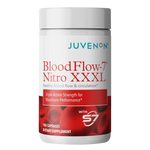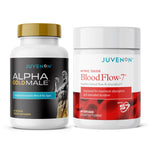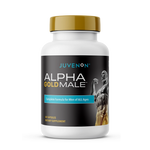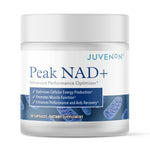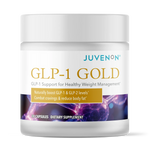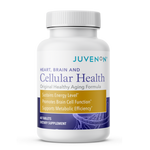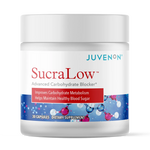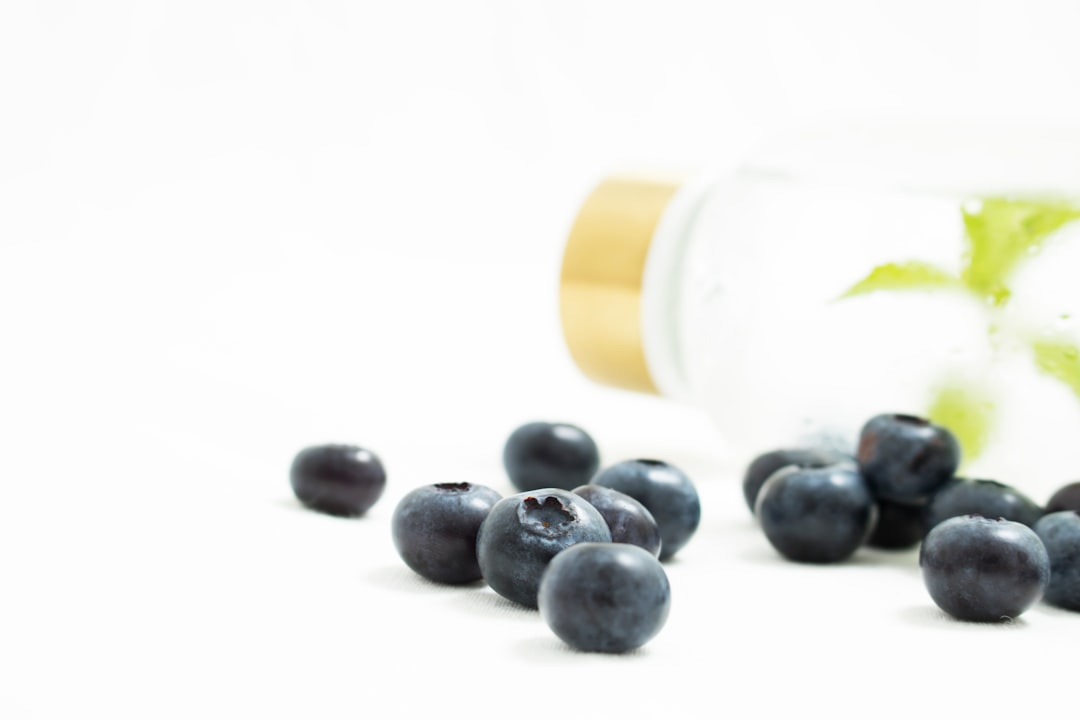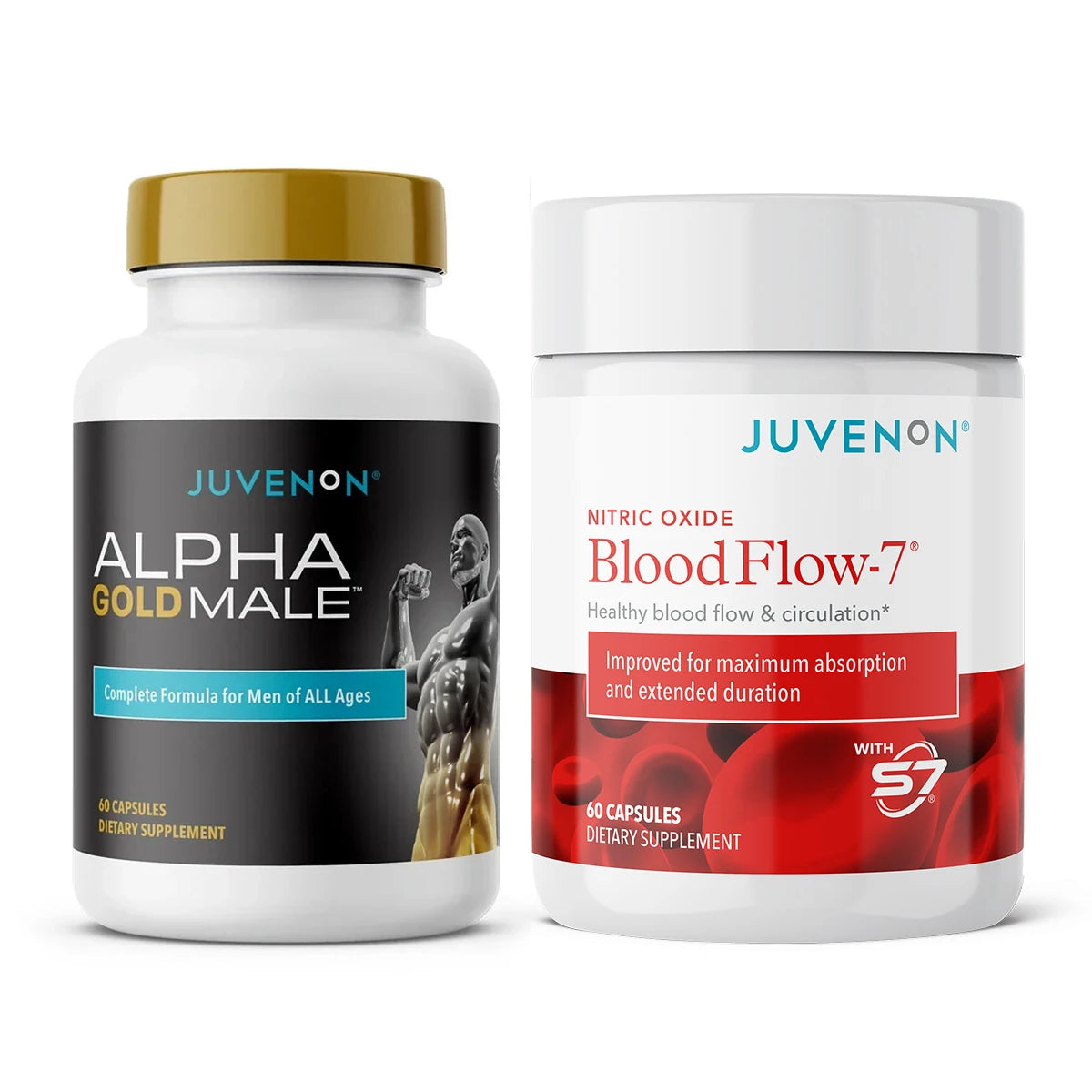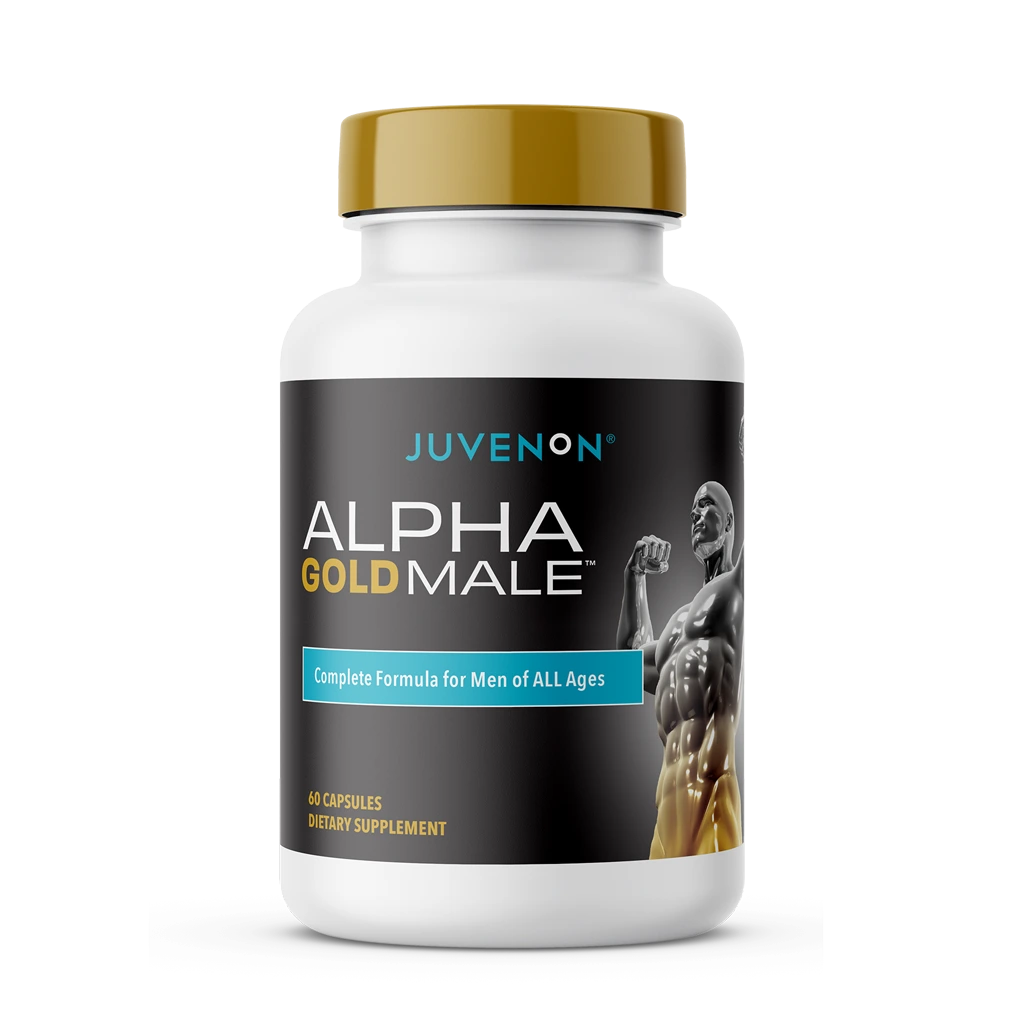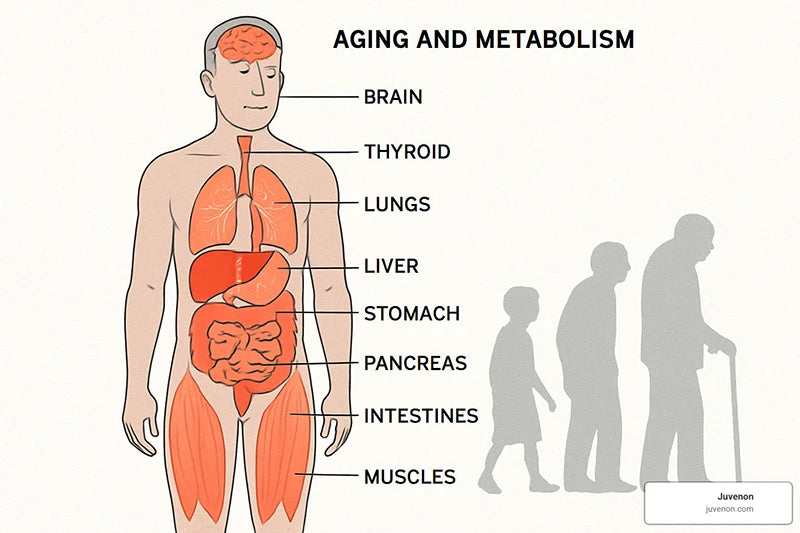
Metabolism decline with age is a natural process that affects everyone, but the timing and extent might surprise you. Recent groundbreaking research involving over 6,400 people from 29 countries reveals that our metabolic rate doesn't follow the patterns most of us expect.
Here's what actually happens to your metabolism as you age:
- Ages 0-20: Metabolism peaks at age 1 (50% faster than adults), then gradually slows by 3% per year
- Ages 20-60: Metabolism remains remarkably stable with no significant decline
- After age 60: Metabolism begins declining by about 0.7% per year
- By age 90: Total daily energy needs drop about 26% compared to middle age
This means that middle-aged weight gain likely isn't due to a slowing metabolism - it's more about changes in diet, activity levels, and body composition.
If you've been blaming a "slow metabolism" for weight changes in your 30s, 40s, or 50s, you're not alone. The common belief that metabolism crashes after 30 has been debunked by science.
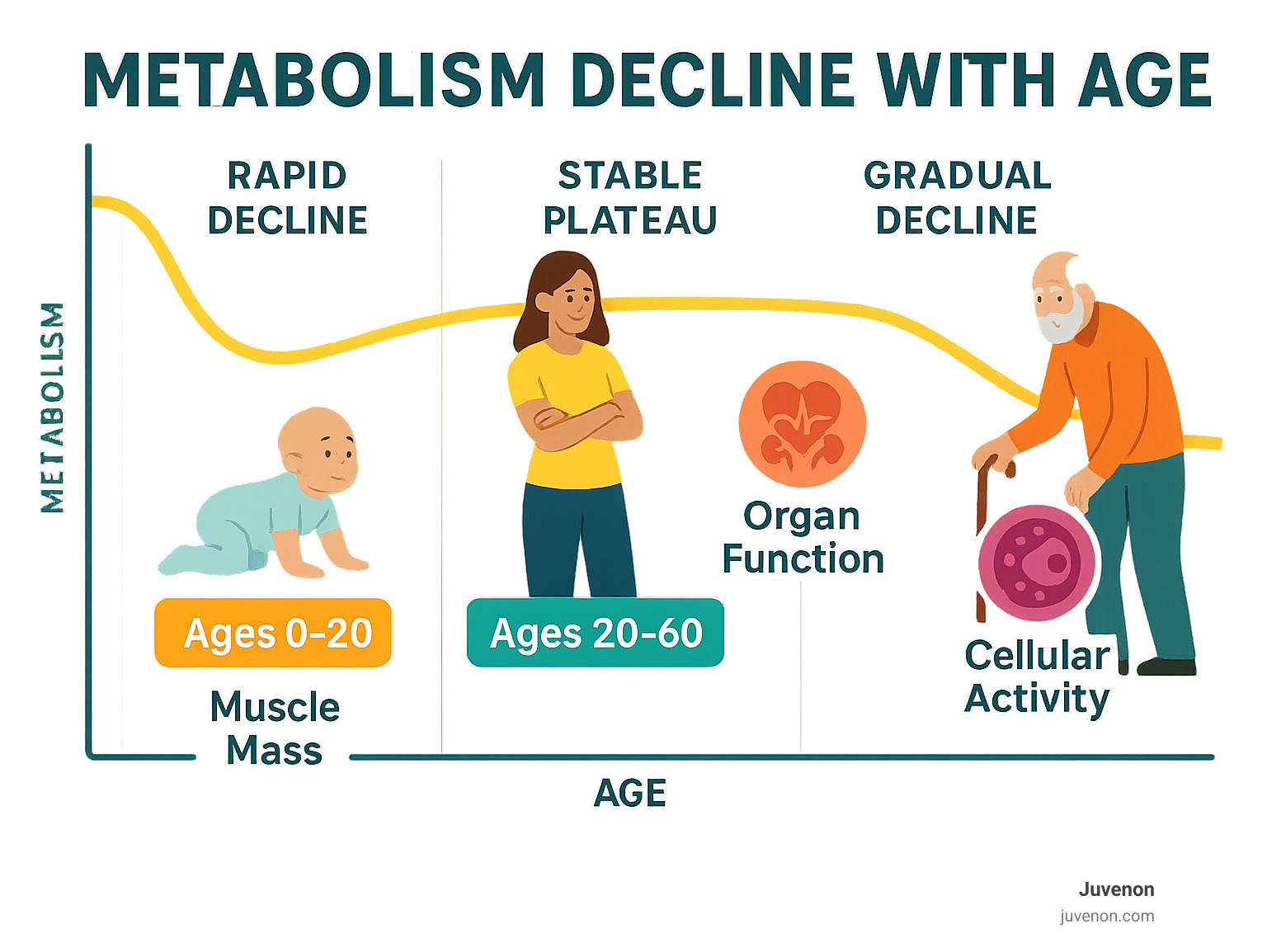
What Is Metabolism, and How Do We Measure It?
Your metabolism is the sum of all chemical reactions happening inside your body right now. While you're reading this, your metabolism is working to keep your heart pumping, your brain thinking, and your cells repairing themselves.
Metabolism has two main jobs. Catabolism breaks down food into energy your body can use. Anabolism takes that energy and builds new tissues, repairs damage, and keeps everything running smoothly.
The gold standard for measuring metabolism is the doubly labeled water technique. Scientists track how your body processes special "marked" water molecules over several days, telling them exactly how many calories you're burning in real life.
Basal vs. Resting Metabolic Rate
Your Basal Metabolic Rate (BMR) is your body's minimum energy requirement - accounting for 60-80% of all calories you burn daily. Resting Metabolic Rate (REE) is slightly higher because it includes basic activities like digesting food.
Here's a simple BMR formula: For men: BMR = 88.362 + (13.397 × weight in kg) + (4.799 × height in cm) - (5.677 × age in years). For women: BMR = 447.593 + (9.247 × weight in kg) + (3.098 × height in cm) - (4.330 × age in years).
Total Daily Energy Expenditure Components
Your total daily energy expenditure has three main components:
Resting energy expenditure makes up 60-80% of your daily calorie burn - all the energy needed for basic functions like breathing and circulation.
Thermic effect of food accounts for 8-15% of daily energy use - the cost of digesting and processing everything you eat. Protein has a much higher thermic effect than carbs or fats.
Activity energy expenditure makes up 15-30% of your total daily burn, including both planned workouts and spontaneous movement throughout the day.
The Human Metabolic Timeline: When Does Metabolism Decline With Age?
Recent research on lifespan metabolism reveals that our bodies follow a completely different energy timeline than expected. If you've been blaming your 30-something weight gain on a "slowing metabolism," your metabolism has actually been steady since you turned 20.
Ages 0-20: Rapid Shifts
Babies are metabolic furnaces. At around their first birthday, little ones burn calories at an incredible pace - about 50% faster per pound of body weight than adults. From that peak, energy needs drop by about 3% each year until age 20.
Ages 20-60: Surprising Plateau
For the next 40 years of your life, your metabolism stays remarkably stable. No dramatic drops in your 30s. No metabolic crash during menopause. No sudden slowdown in middle age.
This destroys common myths. That idea that your metabolism tanks after 30? Not true. The belief that menopause dramatically changes metabolic rate? Also not supported when scientists account for body composition changes.
If you've noticed weight gain during your 30s, 40s, or 50s, your metabolism isn't the villain. The real culprits are usually changes in activity, diet, sleep, or stress levels.
After 60: Gradual Slowdown Begins
The real metabolism decline with age kicks in around age 60. From this point, total energy expenditure drops by about 0.7% each year. By age 90, daily energy needs are roughly 26% lower than in middle age.
What's causing this slowdown? Your liver shrinks by about 32%, kidneys by 23%, and spleen by 55%. Most people lose 10-20% of muscle mass between ages 20 and 80. But the metabolic decline is bigger than muscle loss alone would explain, indicating that aging affects cellular energy efficiency throughout your body.
Why Does Metabolism Decline With Age? Key Drivers
The story behind metabolism decline with age involves multiple factors working together. Understanding these drivers helps explain why some people age more gracefully than others.
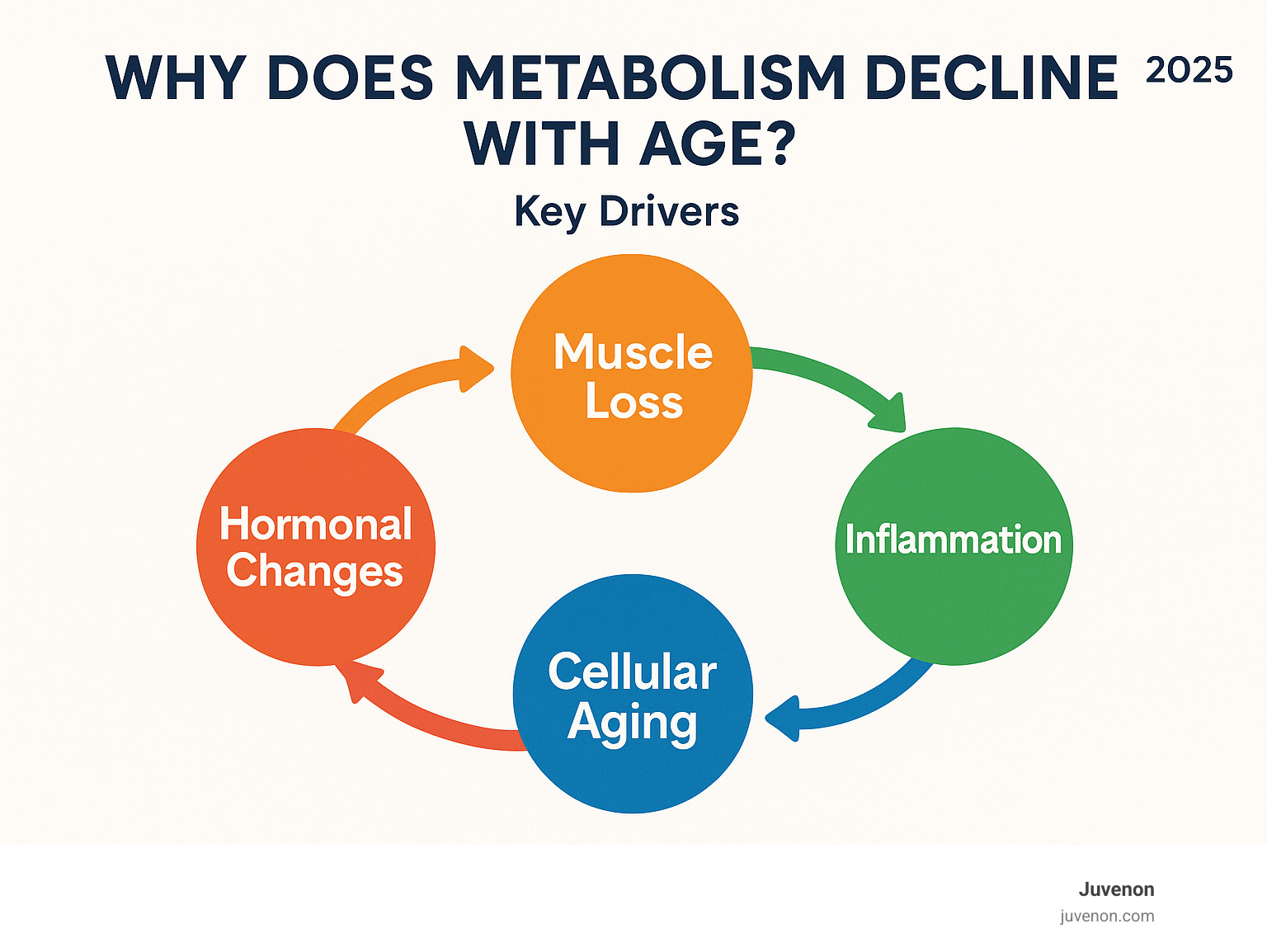
Muscle vs. Fat: Body-Composition Matters
Muscle tissue burns about 6-7 calories per pound per day just to maintain itself, while fat tissue only burns 2-3 calories per pound per day. Adults lose 3-5% of muscle mass each decade after age 30, with acceleration after age 40 when sarcopenia really kicks in.
By age 60, men typically have 14% less leg muscle than at age 20. We don't just lose muscle - we also develop intramuscular fat that infiltrates muscle fibers, reducing their metabolic activity.
Your liver burns over 200 calories per pound per day but decreases by about 32% with aging. Your brain burns 240+ calories per pound daily and stays relatively stable, accounting for a larger percentage of total metabolism as you age.
Hormonal Landscape After 40
Testosterone starts declining in men around age 30, dropping about 1% per year. This affects muscle mass, bone density, and overall metabolic rate.
Women face hormonal changes during perimenopause and menopause. Estrogen fluctuations change how and where your body stores fat, with weight often shifting from hips and thighs to the midsection.
Thyroid function becomes less reliable with age. Growth hormone production drops after age 30, reducing muscle-building ability and increasing fat accumulation. Insulin sensitivity also decreases, especially with increased belly fat.
Lifestyle and Genetic Influences
Physical activity, especially resistance training, is your secret weapon against metabolic decline. Regular exercise can largely prevent age-related muscle loss and keep metabolic rate higher.
Sleep quality affects metabolism significantly. Poor sleep disrupts growth hormone, cortisol, and insulin - three key metabolic regulators. Chronic stress keeps cortisol levels liftd, promoting fat storage and breaking down muscle tissue.
Your genetic makeup influences how gracefully your metabolism ages, but lifestyle choices still matter enormously. Even with genetic predispositions, your daily choices can override many negative effects.
Lifestyle Strategies to Counteract Age-Related Metabolic Slowdown
The good news is that metabolism decline with age isn't inevitable or irreversible. Research shows that targeted lifestyle interventions can significantly slow and even reverse many age-related metabolic changes.

Exercise Prescription for "Metabolism Decline With Age"
Resistance training is the magic bullet for fighting metabolic slowdown. Studies show that older adults who lift weights can maintain muscle mass and metabolic rates that rival people decades younger.
Progressive overload is key. Start with two to three strength training sessions per week, targeting all major muscle groups. Focus on compound movements like squats, deadlifts, and presses. Train each muscle group two to three times per week with three to four sets of eight to twelve repetitions at 70-80% of maximum effort.
Aerobic exercise improves cardiovascular health, boosts insulin sensitivity, and improves mitochondrial function. Aim for at least 150 minutes of moderate-intensity activity per week.
High-Intensity Interval Training (HIIT) is incredibly time-efficient. Just 15-20 minutes of HIIT twice a week can provide significant metabolic benefits.
Eating Patterns That Keep the Fire Burning
Protein is your metabolic superhero. It has the highest thermic effect of all macronutrients. Aim for 1.2-1.6 grams of protein per kilogram of body weight daily, with 25-30 grams of high-quality protein at each meal.
Leucine-rich foods like eggs, dairy, meat, and fish are particularly powerful for older adults. This amino acid acts like a key to open up muscle protein synthesis.
A balanced macronutrient approach works better than eliminating food groups. Include healthy fats for hormone production, choose complex carbohydrates for sustained energy, and focus on whole foods over processed options.
Daily Habits & Bio-hacks
Non-Exercise Activity Thermogenesis (NEAT) includes all calories burned through daily movement that isn't formal exercise. Take stairs, park farther away, use a standing desk, or break up sitting every 30 minutes.
Sleep hygiene might be the most underrated metabolic tool. Aim for seven to nine hours of quality sleep nightly with consistent sleep and wake times.
Hydration optimization supports every metabolic process. Drink water before meals and stay consistently hydrated. Green tea offers modest metabolic benefits thanks to compounds like EGCG.
Metabolism, Weight Gain & Disease Risk After 50
When you hit your 50s, the relationship between metabolism decline with age and your health becomes more complex than just numbers on a scale. The weight gain many people experience isn't just about eating too much or moving too little - your body is changing how it stores and uses energy.
Visceral fat - the type that wraps around internal organs - becomes much more common as we age. Unlike subcutaneous fat under your skin, visceral fat is metabolically active and inflammatory, releasing hormones that interfere with normal body functions.
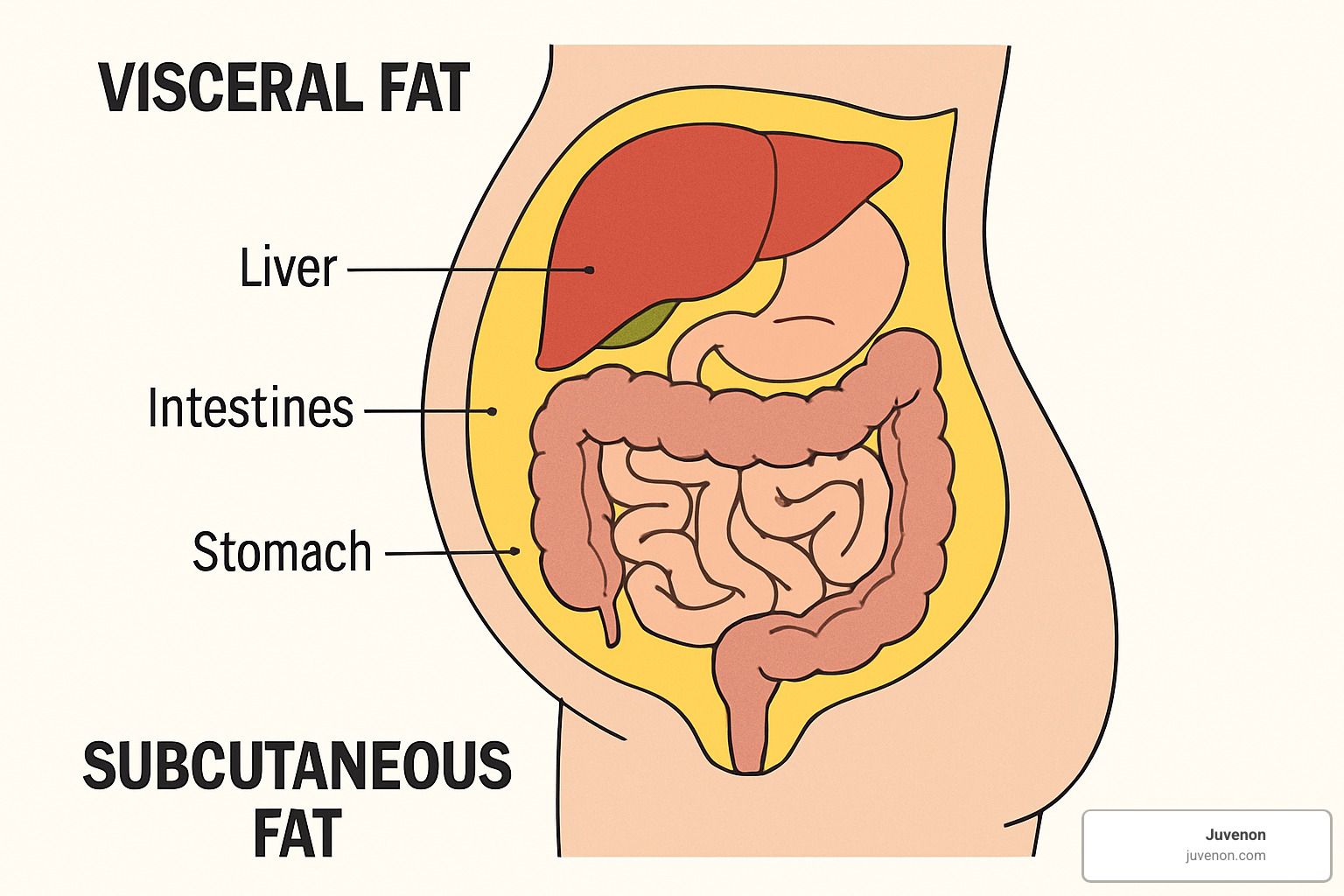
This shift increases your risk of insulin resistance, where cells become less responsive to insulin's signals. Over time, this can lead to type 2 diabetes, cardiovascular disease, and metabolic syndrome.
Men vs. Women: Does Metabolic Decline Differ?
Women face unique challenges during and after menopause. The dramatic drop in estrogen changes how your body stores fat. Before menopause, women typically store fat in hips and thighs. After menopause, fat storage shifts to the abdomen.
Interestingly, menopause itself doesn't significantly slow metabolism when researchers account for body composition changes. Weight gain is more likely due to hormonal changes affecting appetite and fat storage, plus natural muscle loss.
Men experience a more gradual shift starting earlier but progressing slowly. Testosterone levels decline around age 30 at about 1% per year, affecting muscle mass, bone density, and energy levels.
Fat distribution patterns reveal important differences. Men tend to be "apple-shaped" from early adulthood, storing fat around their midsection. Women are typically "pear-shaped" until menopause, when they often shift toward an apple shape.
Tissue-Specific Changes That Matter
Your liver undergoes dramatic changes as you age. By your 80s, liver mass has decreased by about 32%. Blood flow also decreases, affecting how efficiently your body processes nutrients and toxins.
Muscle tissue changes go beyond simple shrinkage. Muscle fibers become smaller and less efficient. Fat begins to infiltrate muscle tissue, reducing metabolic activity and making muscles less responsive to dietary protein.
Your fat tissue becomes more inflammatory as you age. Fat cells grow larger and produce more inflammatory chemicals, contributing to insulin resistance and cardiovascular disease risk.
Frequently Asked Questions About Age-Related Metabolism
Does everyone experience the same metabolic slowdown?
No - metabolism decline with age affects everyone differently. Your genetics play a significant role, but lifestyle choices can often override genetic predispositions.
Regular exercise and healthy eating habits can largely prevent typical metabolic decline. Highly active older adults can maintain metabolic rates similar to sedentary people decades younger.
Your starting point matters too. People who build significant muscle mass early maintain metabolic advantages as they age. Health status significantly influences how aging affects metabolism, while hormonal factors create individual variation.
Can supplements really boost an aging metabolism?
No supplement can completely reverse age-related metabolic changes, but certain nutrients can support your body's metabolic processes.
Protein supplements top the evidence-based list. As we age, protein needs increase, but many older adults struggle to get enough through food alone. Omega-3 fatty acids support muscle function and reduce chronic inflammation. Vitamin D directly affects muscle function and metabolic health.
Magnesium supports hundreds of metabolic processes, while creatine may help maintain muscle mass and strength.
At Juvenon, we focus on scientifically backed formulations designed to support healthy aging processes. Our patented formulas work synergistically with healthy lifestyle choices - they complement your efforts, not replace good nutrition and exercise. We offer a 60-day money-back guarantee.
When should I see a doctor about unexplained weight changes?
Unexplained weight gain becomes concerning when it happens rapidly - more than 2-3 pounds per week without obvious reasons. Pay attention if weight gain comes with extreme fatigue, mood changes, or feeling cold all the time.
Unexplained weight loss can be more concerning, especially losing more than 5% of body weight over six months without trying.
Sometimes metabolic symptoms signal trouble: extreme fatigue that doesn't improve with rest, feeling cold when others are comfortable, hair loss, irregular heartbeat, or significant mood changes.
Your doctor will want to rule out hypothyroidism, Cushing syndrome, PCOS, diabetes, and sleep apnea - all conditions that can cause significant metabolic disruptions.
Conclusion
You now have the real story about metabolism decline with age - and it's probably not what you expected. Your metabolic rate stays remarkably steady from age 20 to 60. The real changes happen much later in life.
This knowledge is empowering. Those extra pounds that crept on during your 40s or 50s weren't because your body suddenly stopped burning calories efficiently. More likely, life got busy with changes in activity, sleep, or stress levels.
The most important thing to remember is that you have control. Even after age 60, when metabolic decline does begin, you're not powerless. Resistance training and adequate protein intake can dramatically slow or even reverse age-related changes.
Your muscles are your metabolic engine. Every pound of muscle you maintain burns calories around the clock. This is why strength training isn't just about looking good - it's about maintaining your body's ability to burn energy efficiently as you age.
Start with two resistance training sessions per week. Add extra protein to each meal. Take the stairs instead of the elevator. These small shifts compound into significant metabolic benefits.
At Juvenon, we've spent years researching how to support healthy aging at the cellular level. Our scientifically backed supplements are designed to work alongside your healthy lifestyle choices, not replace them. We offer a 60-day money-back guarantee because we believe in both the science behind our formulas and your commitment to aging well.
For more information about how our healthy aging solutions can support your metabolic health journey, visit our website.
Remember to work with your healthcare provider as you make changes to your routine. They can help you create a plan that's both safe and effective for your situation.
Your metabolism will change as you age - that's normal. But armed with the right knowledge and strategies, you can maintain your energy, strength, and vitality for decades to come. The choice is yours, and it's never too late to start.



